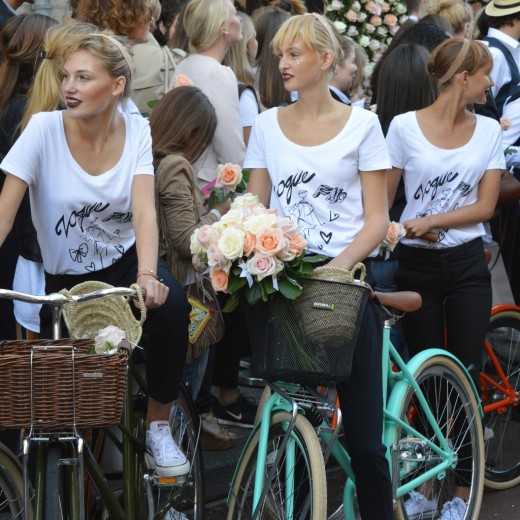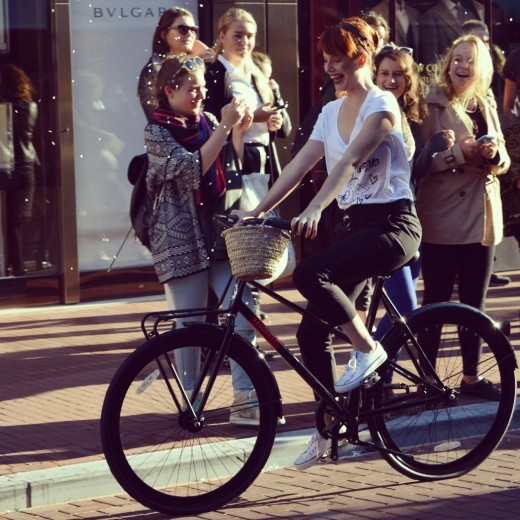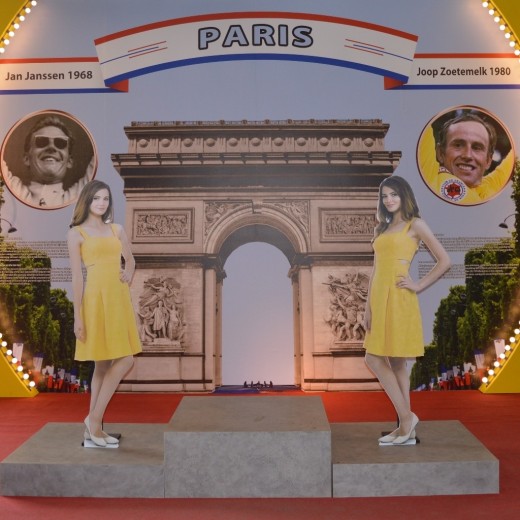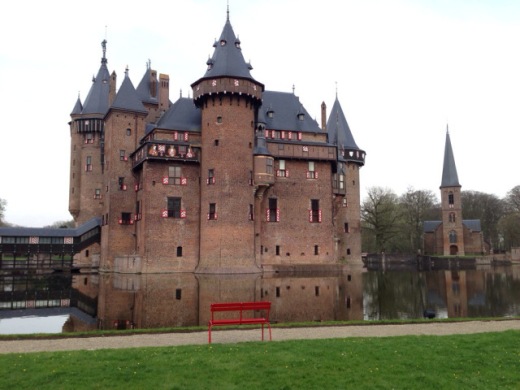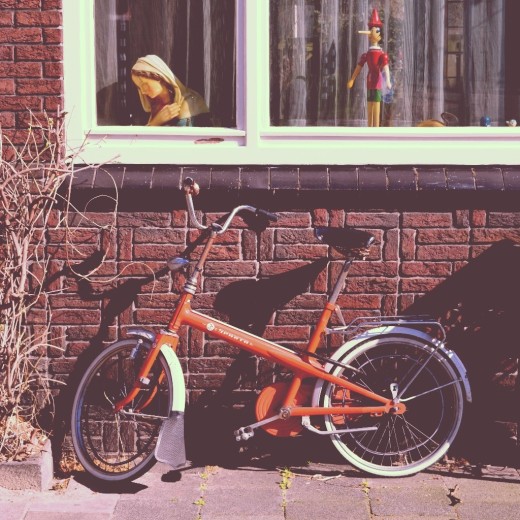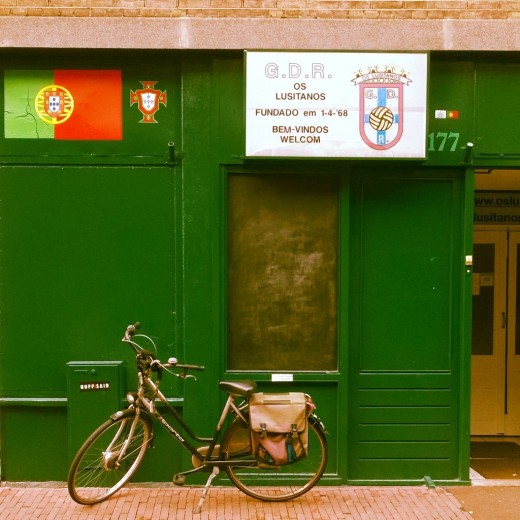Currently in my fourth year in The Netherlands, with four bicycles under my belt, and having photographed more than 1,000 bicycles, I’ve come to develop a pretty good notion of what’s the best second-hand city bicycle to acquire.
Hell, you’re going to be riding it almost every day, in harsh weather, busy traffic, big puddles of water, not just cycle paths but also brick roads. And you are also going to park it in busy and frantic places, with a small amount of time to find a good spot, and when you are back, there’s a high probability that someone stole your bike.
Fortunately, time and the natural survival of the fittest answers the quest for the best city bicycle. Look around you, what do the Dutch cycle every-day? A trendy fixie? No way. A powerful mountain bike? I don’t think so. A quick racing bicycle? Only on weekends. What you’ll see everywhere is what they call a omafiets, or a opafiets if you are a guy.
That translates to Grandma’s bike and some of these (bicycles) look pretty old. Do you think Dutch people are crazy about vintage items? Not all of them, these bicycles really did survive decades of usage. Omafiets are traditionally black and its design does not exactly stand out to the eye, sounds boring? Congratulations, you’ve fallen in the first bicycle shop trap.
Grandma’s bikes don’t stand out, but all the other models do. As a foreigner your first impulse will be to buy that awesome mountain bicycle you rode as a kid. Wrong. You’ll be swearing the day you bought it when all your pants are full of oil, or you don’t have a rear rack to carry stuff around or even when you are not able to give a ride to that Dutch cutie. The same applies for trendy fixies and racing bicycles. Racing bicycles give extra-problems for everyday life in the city as they have thinner tires which is a pain on brick roads and you can fall easily when, for example, you have to do a strong turn to avoid a crazy pizza deliverer that’s abusing the cycle path. No, omafiets is the answer for your prayers.
And a second-hand omafiets is even better. Why? With all the action that the bicycle will get it will soon look and become like a second-hand one. And do you really want to have a more than 500 Euro shiny new stud parked in the city? Apart from quick devaluation your new bicycle will suffer from another malady, especially in The Netherlands. Guess what bicycles are prioritized for robbery? That’s right, your beautiful new ride. And these robbers are quick, they can open a lock in seconds.
Going for a quick trip to only buy cigarettes parking your bicycle with only the rear lock? It’s a long walk home. Jesus, I even know people who were robbed while attending church. Forgot to insure your brand new (and now robbed) bicycle? There goes one Portuguese minimal salary down the window. Anyway, do you really want your bicycle to be more of a worry than a solution? Monthly insurance instalments? Losing trains because you could not find an official parking spot for your pretty bicycle? Not worth it, a second-hand omafiets is your solution.
But not all omafiets are OK. The perfect ones need to have these three main characteristics: minimum maintenance, maximum durability and comfort. Fortunately, I have made a quick list based on these three stepping-stones to be checked when you are buying your second-hand city bicycle.
Checklist for your perfect city bicycle
Minimum maintenance
- No gears – you’re in the Netherlands, big climbs are abroad!
- Backpedalling brakes – no hand-brakes, coaster brakes perform well in rain or snow and do not need maintenance for years;
Maximum durability
- Tires in good condition – make sure they are not worn out;
- A fixed rear wheel lock – very easy to use, nevertheless, always buy a movable lock also, like a U-lock or chain-lock, to decrease the probability of being stolen;
Comfort
- Mudguards on both wheels – just try cycling without these on a rainy day and you’ll understand;
- Full chain guard – against your worst enemy, oil stains, and it also protects the chain;
- Sturdy rear racks – it gives you the possibility to add a cheap bicycle bag to carry groceries or even to carry a friend along;
- Lateral or central stand – it sounds like a simple thing, but with this you can park your bicycle everywhere.
Not essential but will help
- Handlebars curved in towards the rider – this is the Dutch style, for a more comfortable ride;
- One hand-brake – for extra-safety, in case you plan for example to carry children. Do bear in mind that, although it never happened to me, if the chain gets out of place, the coaster brake will not work at all.
OK, so now you know what bicycle you are looking for. You’ve printed the checklist. What comes next? Where are you going to find this companion for life? Where is this sacred one that will take you endlessly from point A to point B without hurting you or others in the way? The place where it all ends and begins: the bicycle shop.
And bicycle shops in The Netherlands are not your usual ones. They have a lot of clientele and a lot of competition. The ones that managed to survive in the market are good in what they do, they know all the dirty secrets and will get the biggest amount of money they can for what they are offering. And a foreigner is not a Dutch person, he is not used to bicycles and usually when he enters a bicycle store in The Netherlands he’s buying his first bicycle. Foreigners are therefore a good prey. Please be aware that I’m not saying that all bicycle shop owners are tricksters, the truth is a foreigner will be damaging himself: he does not even know what type of bicycle he is looking for. But now you know. You want a omafiets with the characteristics on the above checklist. Nevertheless, you still need a plan of action to approach the bicycle shops. Let me lay it out to you.
Action-plan to buy a bicycle
- Take an afternoon and visit at least five bicycle shops in your city – believe me, there are much more stores than that. Don’t go to the nearest bicycle shop, plan an itinerary;
- Use the check-list above – make sure you get all the points checked;
- Pay less than 100 Euros – don’t forget, you are buying a second-hand bike;
- Do a test ride always – ascertain if there are any strange noises, if the brakes work and if you feel comfortable. But don’t be too picky, it’s a second-hand bike;
- Negotiate prices – use the big supply to your advantage, let them know that you can buy it cheaper somewhere else. It is very common to see the same bicycle being sold for 100 Euros in one place and 70 Euros in another, you’ll soon discover it. If you cannot lower the price, negotiate freebies. For example, I got my rear wheel lock for free on my last bicycle.
- No lights is OK – you can always buy the easy and cheap strap-on lights at HEMA;
- If you found a bicycle that fits all the above buy it quickly – the turnaround of second-hand bicycles in The Netherlands is impressive. Once I lost a perfect buy because I hesitated for only 30 minutes. While rechecking competition someone bought it during that time frame.
There you go, you are now ready to cut a perfect deal and you’ll have your perfect companion while staying in the Netherlands: a low-maintenance, durable, comfortable and cheap omafiets. Safe rides!














